Metal parts fabrication has become an integral part of the manufacturing process. From paper holding clips to airplane parts, it is widely used in creating parts for various industries. Every time you are getting into your car picking up your phone or handling a tool, you are using a product that is the result of metal parts manufacturing. Our system relies on these metal parts and without them, we wouldn’t be able to create our houses, build electronic appliances or keep our vehicles operational.
This article brings you a complete metal fabrication guide, explaining everything you need to know. From metal fabrications definition, types, application to its surface finishing options. Also, this guide will serve you with every aspect of metal parts manufacturing. By the end, you will have a better understanding of this crucial process and can take decisions accordingly.
What’s Metal Fabrication?
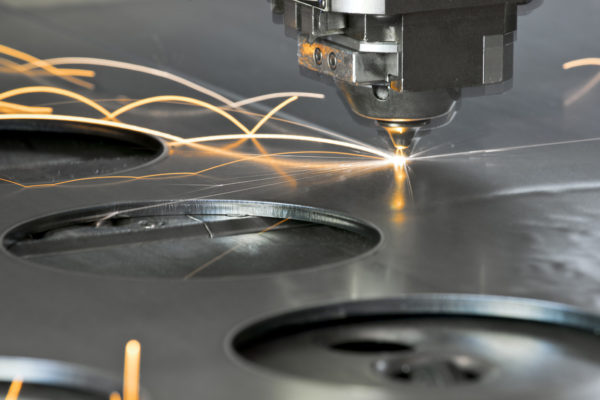
Metal fabrication is a broad term that can refer to the process for metal parts manufacturing such as bending, cutting, assembling, shaping, or molding metals into the desired structure. You can also call this process a value-addition process involving the creation of parts, machines, and other structures from raw materials.
In metal parts fabrication, instead of assembling ready-made components to get the end product, you fabricate the end product from the raw or semi-raw material. The process employs sheets, rods, billets, and bars of stock metal to produce the new metal parts.
Types of Metal Materials – An Overview
Every day we come across dozens of different metals in our life. There are many different types of metal out there and they have two different categories. Let’s have a look at both of them.
- Hard Metal: This type of metal consists of the metal matrix that uses hard material to hold together, which makes them tougher as compared to alloys, pure metals, or hardened steel. These metals are harder but also fragile. What’s more, hard metals are used in the production of cutting materials like drills, milling cutters, chisels, etc. In addition, punching and forming tools can use hard metals. The temperature resistance of the hard metals is significantly higher than that of other metals. Some of the examples of hard metals are tungsten, steel, titanium, and chromium.
- Soft Metal: This is the special class of metal material that has low hardness. The soft material is a surface engineering material and it can be a solid lubricant for rolling and sliding applications. These soft metal reduces the friction in mechanical components and improves the anti-wear ability. Furthermore, they can enhance and increase the service life of the equipment. Gold, lead, silver, thorium, magnesium, zinc, tin, aluminum, copper, brass, and bronze are examples of soft metals.
How to Manufacture Metal Parts
Metal parts manufacturing varies significantly for different types of metals. Each manufacturing type has its strength and compatibilities. To deliver a better understanding of the range of different production methods and help you make the best decision, therefore, we have given an overview of metal fabrication processes below.
CNC Machining: Removing Material
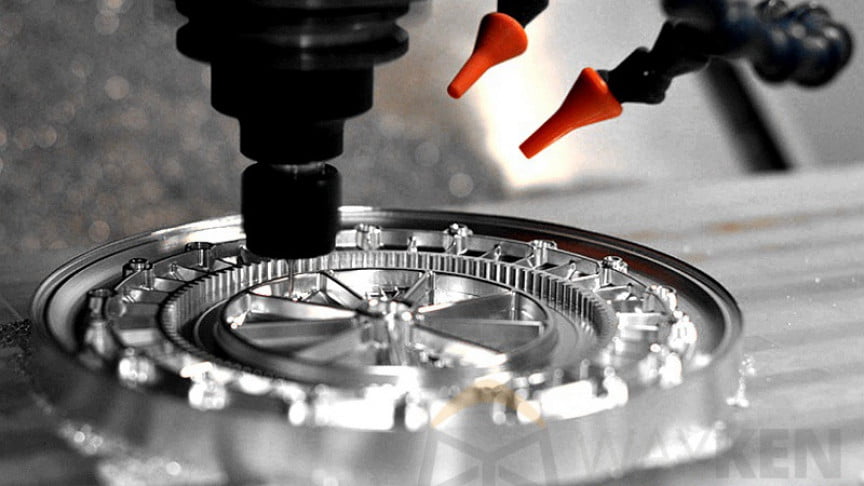
CNC machining is a computer control manufacturing process for cutting raw material into the desired shape through the material removal process. There are many different kinds of machining operations in precision CNC machining, you can employ any of these depending upon the complexity of the geometry and surface texture you require. Consequently, it is the optimal metal part manufacturing option for low to medium complexity and volume.
CNC machining is the go-to process for many industries. The two main categories of the technique are CNC turning and milling.
The milling machine has a multi-point cutting tool. The milling process uses this rotatory cutter to remove the unwanted material from the metal stock (workpiece) and get the desired shape of the metal part. This is achieved by the multi-axis rotation of the cutting tool. Additionally, in CNC turning, a single cutting edge removes the excess metal from the rotating workpiece to produce a cylindrical structure in the metal part. The rotating workpiece is fed to the moving cutting tool slowly in a parallel direction to the axis of rotation of the metal part.
Applications of CNC Machined Metal Parts
Almost every industry in today’s world uses CNC-turned and milled metal parts. These parts are the workhorses of modern industries. With the help of CNC turning, the automotive, telecommunication, electrical, machinery, and electronics industry produce multiple components. For example, CNC turning helps to create bushings, shafts, pins, rods, gearboxes, and heads.
CNC milling is also a well-known machining operation for metal fabrication. Aerospace structures, car models, medical components, and pretty any metal part you can imagine could be machined from CNC milling.
Extrusion: Pushing Metals Into a Die
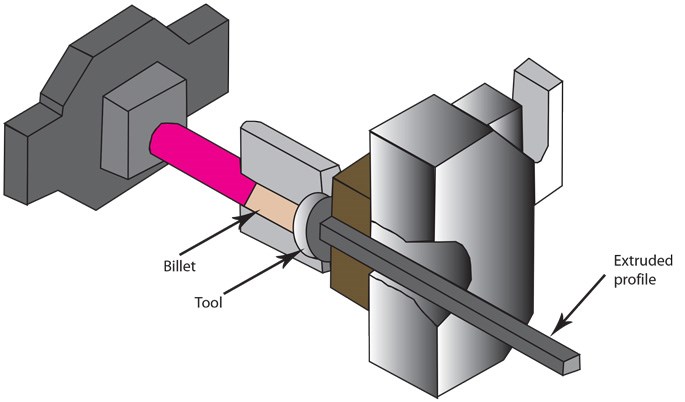
This process involves pushing heated metal into a die. The die creates the shape into a tube or L-shape. Metal can be structured into more complex shapes through this technique. Extrusion-produced metal parts require post finishing such as drilling, cutting, and machining. This is an ideal process that needs constant cross-sections. Hot extrusion can make the larger parts and extreme complexity. In contrast, cold extrusion manufactures smaller parts with less complexity.
In this process, a cylindrical bullet is forced to flow through a closed cavity of which is a die of the desired cross-section. These cross-sections profile the metal parts and force them out with a hydraulic or mechanical press. The metal part comes out with the desired shape.
Extrusion includes three different operations types, hot extrusion, cold extrusion, and friction. Hot extrusion handles at a high temperature to keep the material from hardening. Cold extrusion involves room temperature because the material may have less oxidation, closer tolerance, and be stronger. Lastly, the friction process requires force to push the charge against the die.
Applications of Extruded Metal Parts
Extrusion provides a smooth surface for the paints and finishes. This characteristic makes it ideal for the cosmetic and precision parts. Aerospace and automotive industries use this process for their components. It is also useful in windows, railing, and flooring applications.
Stamping: Cutting and Bending Parts

The stamping process can form shapes, images, and letters on metal sheets. Hydraulic and mechanical presses are two types of stamping. This technique bends, punches, and cuts the metal sheet to bring it in the desired form. Through this process sheets of ¼ thickness can be molded into certain sizes and shapes. Stamping operation includes blanking, metal coining, and four slide forming. This process is highly scalable for high volumes and complexity with low unit costs.
Stamping involves multiple techniques for the sheet metal fabrication process including punching, bending, embossing, coining, and flanging. This could be a single-stage operation where you press the metal to produce the desired form on the sheet to a multiple-stage operation. This process normally utilizes a cold metal sheet.
Applications of Stamped Metal Parts
Stamping is the process for the manufacturing of millions of parts in the electronic, appliance, and automotive industries each year. This method is suitable for making high-volume functional parts such as enclosures, brackets, and chassis. It is also an optimal option for the robotics industry.
Forging: Shaping the Metal
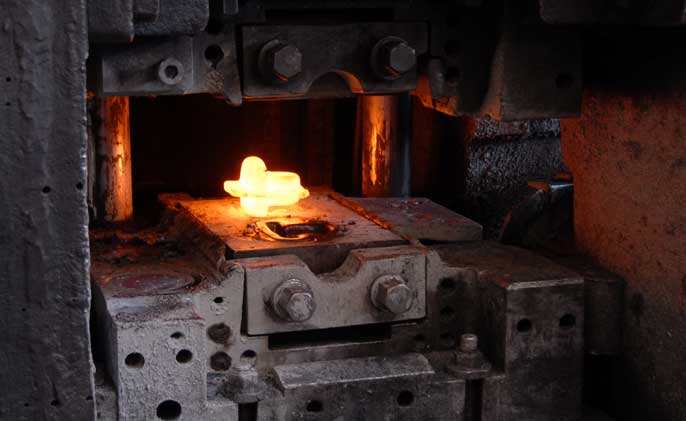
It is a manufacturing process using localized compression forces to shape the metal. To put it in simple words, this is the process of heating and shaping metals. In addition, it is a popular automated industrial process. The forgeable parts range from kilograms to a hundred metric tons. Modern industries use high-impact forge machines to shape metals into desirable structures. Forging produces stronger metal components than casting and machining. This process is economical and produces less waste.
It is a simple process that includes five steps namely heating, performing, forging, cooling, and finishing. Also, this process does not require a metal reduction in liquid, heating metal to a malleable state is enough for the forging which makes the metal part more strong.
Applications of Forged Metal Parts
Widespread industries across the globe have the need for forged metal components. The automotive industry uses these components for shock and stress applications such as wheel spindles, kingpins, shafts, torsion balls, etc. These parts have applications in surgical tools, electrical transmission, domestic hardware, and general industrial equipment.
Casting: Time-Honored Manufacturing Process
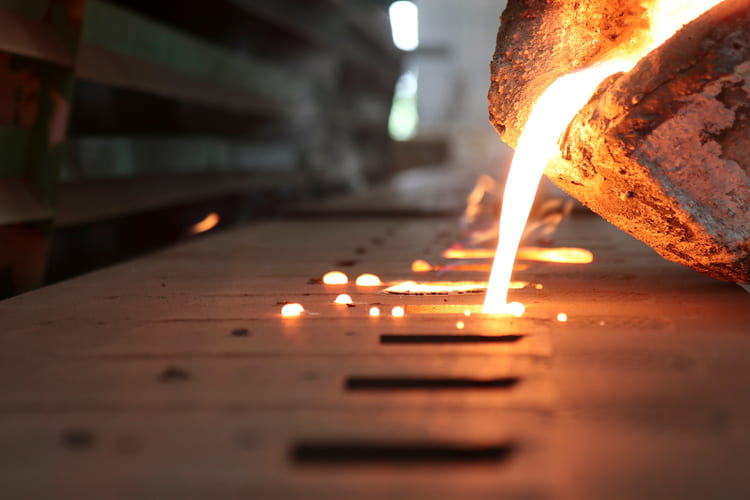
It is one of the most flexible metal parts fabrication processes. Casting is ideal for a wide range of complex-shaped metal structures. You can say it is the economical solution to the metal fabrication problems that would otherwise take multiple methods to solve. The process poures the liquid material into a mold which is a prebuild hollow cavity of the desired structure. Then it can cool the material and solidly then eject from the mold to get the casted metal part.
There are two well-known methods of casting. Let’s have a look at both.
- Investment Casting: The investment casting uses the wax model of the final product. The wax is coated with ceramic, once the ceramic is hardened the wax is heated and drained out. The hardened shell of ceramic becomes the mold for the desired metal part. The molten metal is poured into the mold and left to cool and separate from the mold. This process ensures the production of detailed and complex parts. Investment casting can meet small production needs.
- Die Casting: This process forces the liquid metal into a mold with the help of hydraulic pressure. The steel molds are fabricated in a manner to produce intricate shapes that ensure repeatability and accuracy with effectiveness. Consequently, die casting is suitable for the large production runs for small to medium size castings with utmost complexity.
Applications of Casted Metal Parts
This process is able to make nearly all commercially manufactured mechanical devices in today’s time. Additionally, in terms of production, the casting outperforms CNC machining on cost and other aspects. This method of metal fabrication manufactures washing machines, metal pipes, and automobiles components are regularly.
Metal Injection Molding: Large-volume Production Process
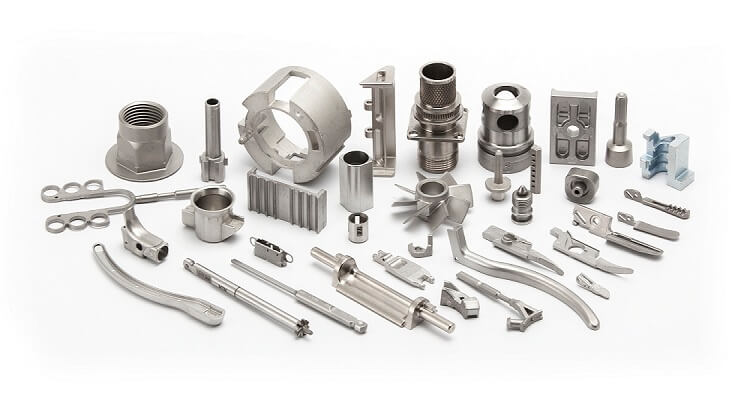
In this process, metal is finely powdered and then mixed with binder material to create the feedstock. Then feedstock is solidified and shaped into the final product. This technique is ideal for large volume production and also cost-effective that would otherwise be quite expensive to manufacture by other methods.
Metal injection molding is different from die casting in a way that it uses a feed of polymer-metal mix. The mixture of metal and polymer is created in the first step. After that, the process will melt and then inject the powder feedstock into the mold and then cool and solidify to take the mold shape. In the last step, eject the molded part from the mold and clean it.
Applications of Injection Molded Metal Parts
This process is an innovative technology in metal parts manufacturing that has the capability to produce complex parts in large numbers with consistency. There are many parts using this technique to produce in the automotive industry. This manufacturing process also manufactures many other products of airplanes, medical equipment, fittings, ornaments, computer, office products, and home appliance components.
Note: For manufacturing medical devices, the plastic injection molding technique is also an incredibly effective way.
Metal 3D Printing: Complex Geometries and Low Volume Parts
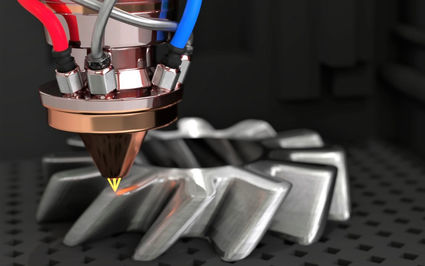
Metal 3D printing uses laser technology to produce metal parts. This method is common in prototypes and as a substitute for low-volume casting. The technique is ideal when it comes to highly complex low volume parts with low cost and shorter lead time. Metal 3D printing is also acknowledged for its ability to produce all-in-one assembly and geometries with inaccessible areas which are near impossible with standard tooling.
In this process, metallic particles are 3D printing step by step. In metal 3D printing, the chamber where this operation performs is filled with inert gas (e.g argon) to reduce the oxidation of the metal powder and then heated. After that, spread a thin layer of metal powder over the build platform and a laser scans the cross-section of the components fuses the metal particles to create a layer. The entire area of the model is scanned and the fully solid part is built this way. Now the final metal 3D printed part is ready to use.
Applications of 3D Printed Metal Parts
Metal 3D printing allows quick and inexpensive manufacturing of the different industrial parts. However, it is famous for the mass production of custom tools and the low volume production of specialized instruments. Thus, the technique is a great way to produce fully functional prototypes, rigid housing, ductwork, spare parts, production tools, surgical and dental implants, jewelry and decorative items, and many other components into different modern industries.
Surface Finish Options for Metal Parts
This is the final process in the manufacturing operation. Surface finishing provides environmental protection and aesthetics to metal fabricated parts. In addition, this process improves the features such as surface roughness and corrosion resistance which is beyond the capacity of machining operations. On top of that, some treatments can also increase the mechanical and electrical properties of the metal parts.
Below mentioned are some of the surface finishing options for metal parts.
- Electroplating
- Electroless Plating
- Anodic Oxidation
- Chemical Treatment
- Vacuum Plating
- Hot Dipping
- Painting
- Thermal Spraying
RapidDirect Helps with Custom Metal Parts
RapidDirect is a leading metal parts manufacturer from China with modern technological equipment. We always bring new ideas and innovations to help you with your custom metal parts manufacturing. Besides, we take pride in telling you that we have impeccable prototyping and manufacturing service that has delivered metal parts across the globe. Moreover, from small metal parts manufacturing to large volume production we provide high-quality metal parts at a competitive price.
Moreover, we are ISO 9001:2015 certificated company because we believe in delivering immense quality and out-of-park metal products. Our veteran engineer team is an example of experience and intelligence bound together. We have excelled in metal parts fabrication by investing our time in this manufacturing process.
So, if you are looking for a metal parts manufacturer, your search ends here. Get fast manufacturing lead time with RapidDirect’s impressive manufacturing capabilities. Just upload your CAD file and our customer support agent will be in touch with you with a market competitive quotation.
Conclusion
It is imperative that metal is an extremely important material for many industries and household items that have given us so impressive equipment that made our life easier and better. In this article, we have discussed metal parts manufacturing and its fabrication options due to their highly detailed and unique characteristics. This guide can help you grasp various metal processing methods.


